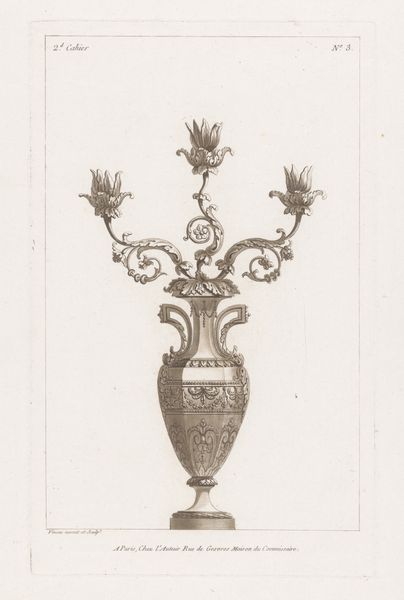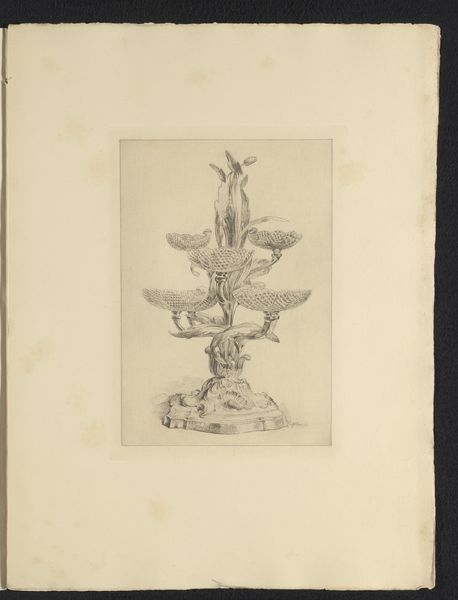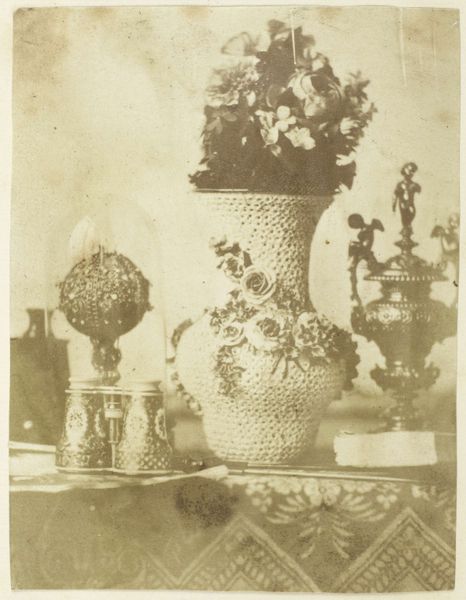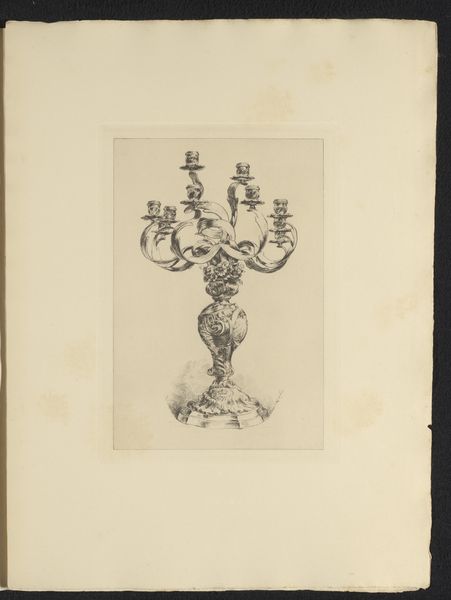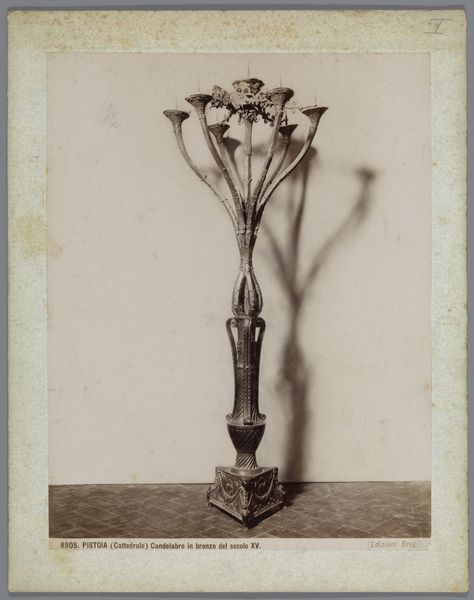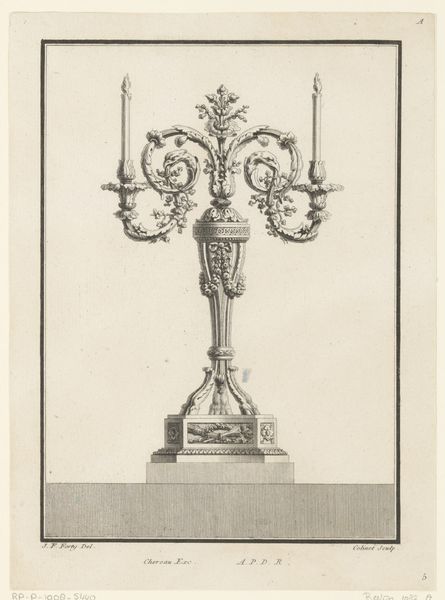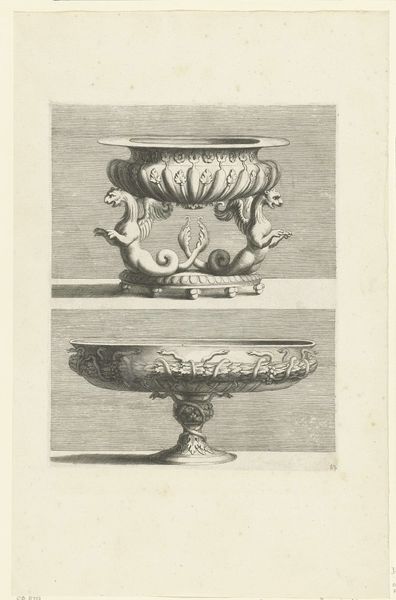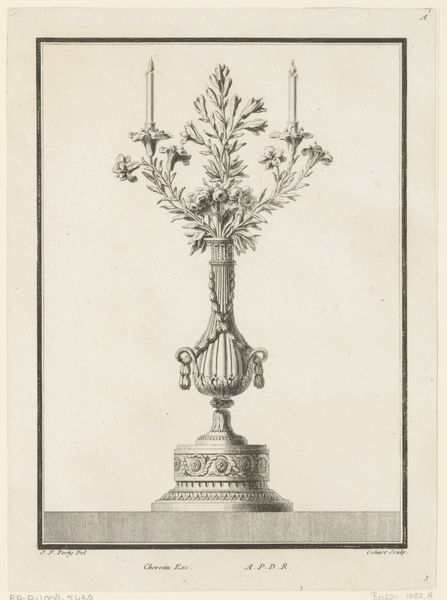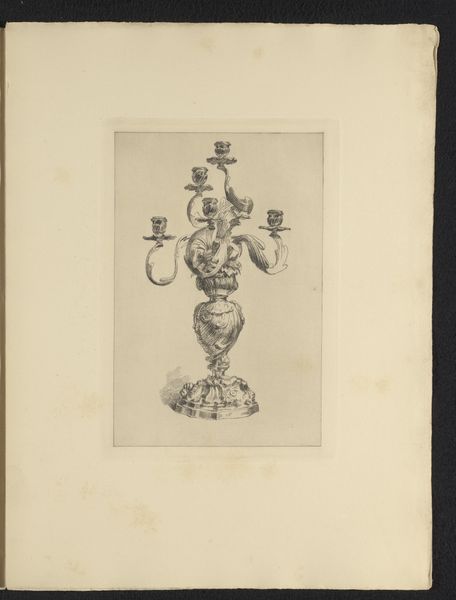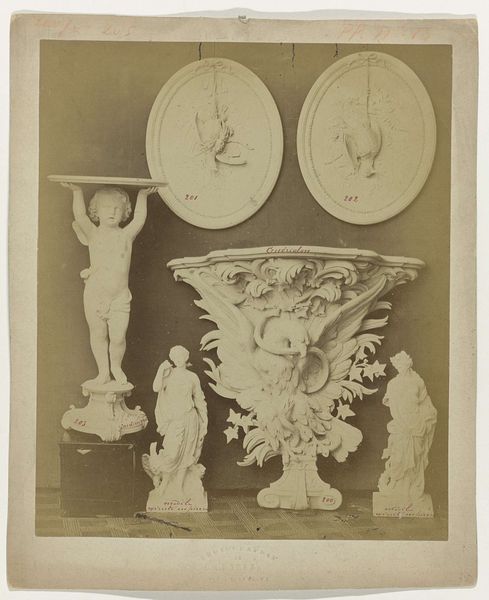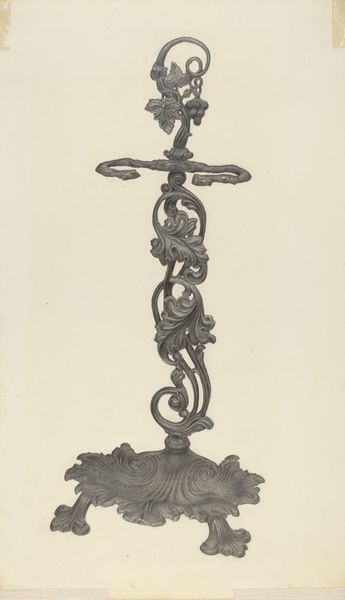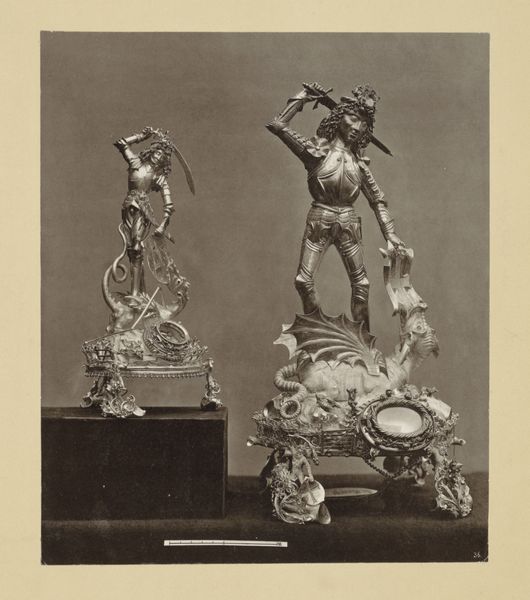
metal, photography, sculpture
#
metal
#
photography
#
sculpture
Dimensions: height 170 mm, width 225 mm, height 202 mm, width 240 mm
Copyright: Rijks Museum: Open Domain
Editor: Here we have a photograph from the Rijksmuseum of "Drie smeedijzeren kandelaars"—or, three wrought iron candlesticks—dating from 1869 to 1887. I’m immediately struck by the detail; even in a photograph, you can see the incredible artistry in the metalwork. What stands out to you when you look at these, thinking about their history and creation? Curator: What grabs my attention is not just their aesthetic quality but the labor embedded within them. Wrought ironwork, especially pieces as ornate as these, speaks volumes about the skills, the physical effort, and the time investment of the blacksmith who forged them. Think about the social hierarchy and division of labor. These weren’t mass-produced trinkets; they were luxury items crafted by skilled artisans for a specific, probably wealthy, clientele. Editor: That’s a great point; the implied labor definitely adds another layer. Is there a connection, do you think, between the growing industrialization and the interest in photographing, almost preserving, handcrafted items? Curator: Absolutely. The photograph itself becomes a crucial piece of evidence here. The rise of industrial production threatened traditional crafts, like ironwork. This photograph freezes a moment in time, documenting a form of labor that was rapidly becoming obsolete. Was it perhaps intended to idealize pre-industrial production models in opposition to increasing industrialization and mass manufacturing of substitute home accessories? Editor: So the photograph not only captures the objects but also becomes a statement about the value of craftsmanship. Curator: Precisely! It challenges the clear boundaries often drawn between "high art" and "craft," urging us to acknowledge the cultural and economic value of artisanal labor, and to analyze its specific context within the broader system of 19th-century production and consumption. Editor: I never thought about it that way. Seeing the artistry connected to the economic landscape makes these candlesticks even more captivating. Curator: Indeed. Focusing on production and consumption provides a really different lens to see with.
Comments
No comments
Be the first to comment and join the conversation on the ultimate creative platform.
